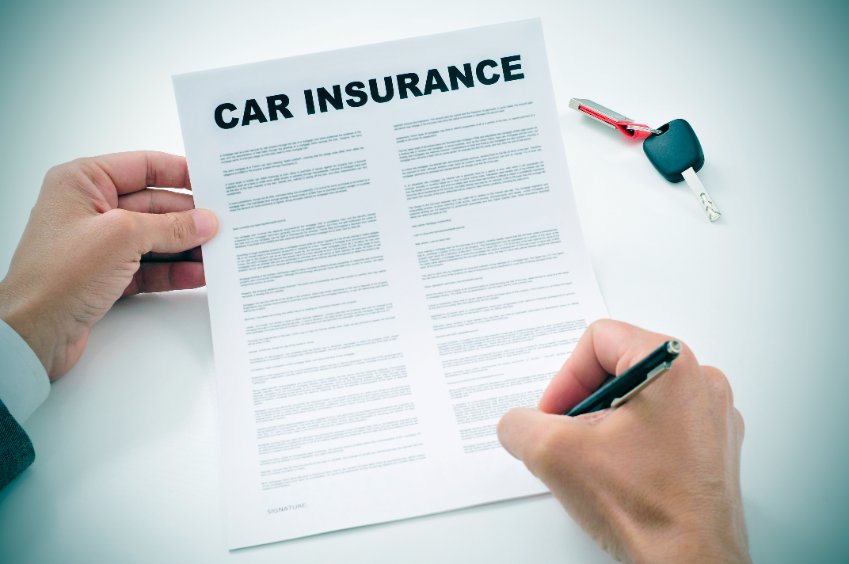
Every state chooses how it will deal with vehicle accident claims and is either a fault or no-fault state. Most states operate under a system known as tort liability, also referred to as “fault states.” The remaining states either utilize both systems simultaneously or are no-fault states. If you’re in an accident in another state, this might come as a surprise. It is important to know where your state stands on car accident claims.
Our personal injury attorneys outline the operation of no-fault insurance, what to anticipate from your motor insurance provider, and how to obtain the greatest settlement possible for any injuries or property damage from a car accident.
What Is No-Fault Auto Insurance?
No-fault car insurance is when a driver files a claim with their own insurance provider, regardless of who may have caused a car accident. For example, if you were hurt in a rear-end collision, both you and the other driver would submit insurance claims with their own providers. When an accident results in the death of the driver or one of their passengers, personal injury protection (PIP) coverage pays for burial costs as well as first-party costs including medical bills, lost income, and even funeral expenses if another passenger is killed in the accident.
Types of No-Fault Insurance
“No fault” is sometimes used to define car insurance policies that aren’t strictly no-fault states. There are limitations to your ability to sue another driver for your injuries in a true no-fault state.
Drivers can select either a no-fault insurance policy or a fault (also known as tort liability) insurance policy under a different type of no-fault insurance system called choice no-fault. A driver’s legal options are constrained if they opt for no-fault insurance.
There are also what are referred to as add-on states. PIP insurance is an optional add-on in some add-on states, but not in others. There are no limitations when filing a personal injury lawsuit against other drivers in either scenario in these states.
Fault and No-Fault States
There are 9 true no-fault states (plus one U.S. territory), 3 choice no-fault states, and 10 add-on states (plus Washington, D.C.). Any state not listed below is considered a fault or tort state.
True No-Fault States
- Florida
- Hawaii
- Kansas
- Massachusetts
- Michigan
- Minnesota
- New York
- North Dakota
- Puerto Rico
- Utah
Choice No-Fault States
- Kentucky
- New Jersey
- Pennsylvania
Add-On States
- Arkansas*
- Delaware*
- D.C.
- Maryland*
- New Hampshire
- Oregon*
- South Dakota
- Texas*
- Virginia
- Washington
- Wisconsin
*PIP insurance is required in these states. In every other listed state, PIP is optional.
Who Pays for Car Damage in a No-Fault State?
Although drivers in no-fault states typically have to submit an injury claim with their own car insurance, this is not the case for damage to your car and any belongings inside of it that were damaged in the accident. Property damage is always paid by the at-fault driver’s liability insurance, even in no-fault states (unless you have supplemental coverage, such collision or uninsured/underinsured motorist insurance, in which case you can make a claim against your own policy).
Similar to this, your liability insurance won’t pay for damage to your own vehicle if you were at fault for the collision. If you have collision insurance, you will either need to use it or pay for the damage to your car out of pocket.
What If Insurance Doesn’t Cover All My Losses?
Auto insurance may not cover all of your losses, particularly in traffic incidents that result in catastrophic injuries. This can happen more frequently in states with lower minimum insurance requirements. For instance, Utah only mandates that drivers buy PIP insurance worth $3,000 total. After a major accident, this amount will only go so far.
In addition, several no-fault states mandate a minimum of $10,000 per accident in property damage liability coverage. You still have a $10,000 loss to make up if your $20,000 vehicle is totaled in an accident that was not your fault.
Filing a Lawsuit in a True No-Fault State
If you live in a no-fault state, the amount of bodily injury damages, whether monetary or verbal, that you can seek compensation for in a personal injury lawsuit against the driver who caused the collision (or their insurance provider) is capped. The term “monetary threshold” describes the minimum monetary amount of losses that must occur before a lawsuit can be filed. It could be any sum that is greater than the PIP coverage limit or another predetermined sum that is established by each state.
The verbal threshold describes the kind of harm that must have occurred before a lawsuit can be filed. This often includes the following:
- Permanent scarring or disability
- Substantial total impairment lasting for a certain period
- Fracture or break of a weight-bearing bone
- Series disfigurement
- Dismemberment
- Loss of a fetus
- Permanent limitation or loss of function of a part of the body
What constitutes a serious injury and warrants filing a personal injury lawsuit is defined differently by state. Contact a personal injury lawyer to see if your series injury applies.
Filing a Lawsuit in a Choice No-Fault State
Whether you purchased no-fault insurance or tort liability insurance will determine whether you are free to file a personal injury lawsuit if an event happened in Kentucky, New Jersey, or Pennsylvania. If you decide on no-fault insurance, you will have to stay within a verbal threshold in Kentucky and New Jersey and a monetary threshold in Pennsylvania.
Any monetary or verbal thresholds do not affect your ability to bring a personal injury claim if you bought standard fault insurance.
Filing a Lawsuit in an Add-On State
If you live in an add-on state, you can utilize your PIP coverage and then file a personal injury lawsuit if you have exhausted your coverage and/or the at-fault motorist’s liability coverage. In these states, bringing a lawsuit is not subject to any limitations or requirements.
Do I Need a Personal Injury Lawyer in a No-Fault State?
Most of the time, no-fault states help reduce the need for car accident victims to file a personal injury lawsuit since they may deal with the claim directly through their insurance provider, saving time and money for all parties. However, if you or a loved one suffered serious injuries in a collision brought on by the negligence of another driver, you may be entitled to more money in damages than what is covered by your car insurance policy.
If this is the case, a knowledgeable and skilled personal injury lawyer from Lerner and Rowe can help you obtain a fair settlement.
Contact a Car Accident Lawyer at Lerner and Rowe Injury Attorneys
With licensed attorneys in 16 states and a network of other law firms we collaborate with in all 50 states, Lerner and Rowe Injury Attorneys are a reputable personal injury law firm. Our team is dedicated to assisting injured victims in obtaining the compensation and respect they deserve. With over 240 years of combined litigation experience, tens of thousands of positive client reviews, and about $200 million recovered annually for the past three years, our team has a strong track record of success.
We encourage you to get in touch with us for a free consultation and case evaluation if you were hurt in a car accident or lost a loved one to wrongful death.Our team is available 24/7 to take your call at (844) 977-1900. You can also reach our team via LiveChat, or fill out this form. The call is free, the consultation is free, and we charge no fees until we make a recovery on your behalf.



